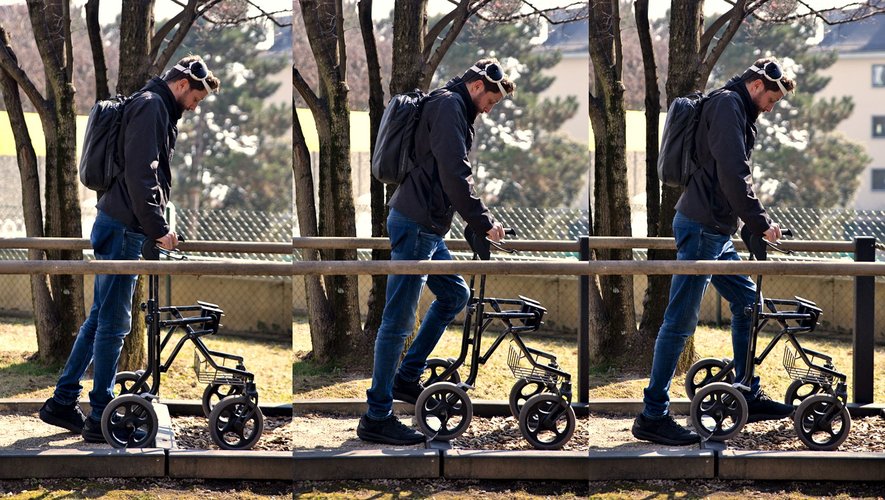Gert-Jan Oskam, paraplegic for 12 years, managed to walk again thanks to a technology that transforms “thought into action”. Explanations.
It is a world first. Gert-Jan Oskam, a 40-year-old Dutchman, was able to walk 12 again after a bicycle accident that left him paraplegic. He has regained control of his legs and sets them in motion only by thought. This technical feat was made possible by the bioengineering research center NeuroRestore, which brings together the Swiss from the École polytechnique fédérale de Lausanne, the Center hospitalier universitaire vaudois and the University of Lausanne, in partnership with the French from the center of Clinatec biomedical research.
“We have developed a wireless digital bridge between the brain and the spinal cord using Brain-Computer Interface (BCI) technology that turns thought into action”, summarizes Grégoire Courtine, professor of neurosciences at EPFL, CHUV, and UNIL. The case of Gert-Jan Oskam, the first patient to benefit from the BCI, was the subject of an article published Thursday, May 24 in the journal Nature. “The most impressive thing happened after two days. I was able to control my hips after 5-10 minutes“, says the forty-something in an online video.
Recovery of neurological functions
Scientists have developed the Brain Spine Interface, a brain-spine interface. It is a digital bridge that restores communication between the brain and the spinal cord. A first implant is located in the brain. “We implanted WIMAGINE devices above the region of the brain that is responsible for leg movements,” says neurosurgeon Jocelyne Bloch, professor at CHUV, UNIL and EPFL. At the other end of the bridge, a second device, “a neurostimulator connected to a field of electrodes, was positioned over the region of the spinal cord that controls leg movement”, continues the scientist.
The second implant is able to understand the information sent by the first via algorithms developed by artificial intelligence. “When Oskam thinks about walking, the cranial implants detect electrical activity in the cortex, the outer layer of the brain. This signal is transmitted wirelessly and decoded by a computer that Oskam carries in a backpack. This then transmits the information to the spinal impulse generator. at the level of the spinal cord, we read in Nature. The intentions of the movement are then translated by electrical stimulation of the spinal cord which controls the muscles and triggers walking. The reaction is immediate: “when I decide to take a step, the simulation starts, as soon as I think about it”.
Thanks to this wireless device – Gert-Jan Oskam was able to experiment with it completely independently – he also managed to recover neurological functions that his accident had deprived him of. “The researchers were thus able to quantify remarkable improvements in his sensory and motor abilities, even when the digital bridge was deactivated”, confirms NeuroStore. Thus Gert-Jan Oskam is now able to walk short distances without the device, using crutches.

